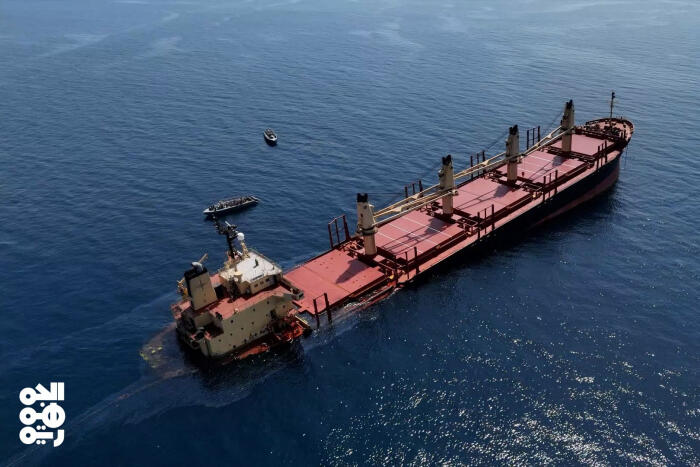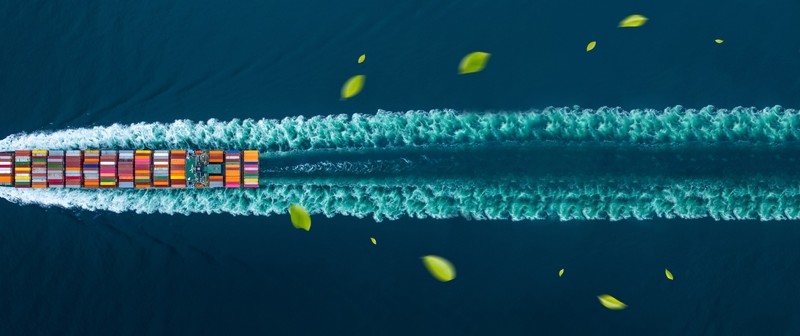For countries in the Horn of Africa, at the eastern tip of the continent, missile and drone attacks in the Red Sea are not a vague threat. Djibouti, for example, is located directly opposite Yemen, a country largely controlled by Houthi rebels. Barely 30 kilometers separate the two states in the narrowest part of the Bab Al-Mandab Strait (“the gate of lamentations”, in Arabic), which marks the entrance to this maritime axis leading to the Suez Canal. On February 24, an explosion was recorded at sea just 70 nautical miles (130 km) from the Djiboutian capital, according to the British maritime safety agency UKMTO.
These attacks carried out since mid-November by the Houthis, who claim to act in solidarity with the Palestinians and target ships they consider linked to Israel, are shaking the global maritime ecosystem. Around 30% of the world’s container transport passes through the Red Sea and then the Suez Canal, a major route linking Asia to Europe in particular.
Article reserved for our subscribers
In response to the threat, the world’s three major shipowners – MSC, Maersk and CMA CGM – have diverted their ships to the route around the Cape of Good Hope, in the far south of Africa. A longer detour (ten additional days), more expensive and more polluting. However, a return to normal does not seem to be in immediate sight: faced with the strengthening of American and British military operations and the arrival of a European force, the Yemeni rebels promised an “intensification” at the end of February.
The consequences of this crisis are being felt far from the Gulf of Aden. In Germany, for example, Tesla announced a temporary suspension of its production of electric vehicles in February due to a lack of components manufactured in Asia. But for the countries of the Horn of Africa (Djibouti, Somalia, Eritrea and Ethiopia in the most restricted sense, but Kenya and Sudan often being included), the excitement is on a completely different scale.
A strategic route In the region, “foreign trade is highly dependent on the Suez Canal”, underlines a report published by the UN agency Unctad in February: 31% of Djibouti’s foreign trade and 34% of Sudan’s trade takes this route. strategic. “In comparison, although much larger in absolute terms, only 7% of Germany’s foreign trade volume passes through the Suez Canal,” the report states. Exact figures for falling revenues at the region’s main ports are difficult to obtain.
But they should be substantial. In Djibouti for example, 75% of GDP comes from services, essentially made up of the significant port economy developed over the last twenty years to make this country, desert but strategically located, a logistics hub.
Sefacil, a French foundation dedicated to port logistics, currently shows a drop of 10% in calls in Djibouti, 22% in Port Sudan, while Mombasa is the only port in the area to gain (+ 15%). ). But for Yann Alix, its director, these figures hide the fact that “the large companies are rerouting very large ships to the Cape of Good Hope but continue to operate in the area with smaller ships, while assuming the risk of war therefore probably with considerable extra premiums.
Consequently, not only are fewer containers transiting but “these degraded services must be very, very expensive”, he adds, referring to a multiplication “by three, even four” in the price of the container inland. Fear of shortages At the port of Mombasa, which therefore benefits from its secure location on the Indian Ocean, “transport costs have increased by 45 to 50%”, confirms Juma Ali Tellah, director of the maritime transporters association. Kenyans (KSAA), also emphasizing the congestion issues for exporters (particularly coffee and tea). In Sudan, the NGO International Rescue Committee (IRC) warned on Wednesday February 28 of a 40% increase in the cost of importing its medicines via Port Sudan, “the main hub for humanitarian organizations” active in this country at war. . It is currently difficult to establish to what extent the crisis in the Red Sea has a direct impact on the cost of living. Especially since the region has already suffered a series of shocks in recent years: after the very strong economic slowdown due to the pandemic, in countries with almost no social safety nets, the war in Ukraine has caused the price of fuel and cereals, all largely imported. The depreciation of local currencies against a strong dollar has only aggravated galloping inflation. Read also: Who are the Yemeni Houthis involved in the war between Hamas and Israel?
Among the countries of the Horn, Ethiopia, landlocked, with a structural shortage of dollars and with the second largest population in Africa (120 million inhabitants), appears to be the most worried.
In Addis Ababa, the price of the container would have increased from 1,500 to 5,000 dollars, notes Jonah Wedekind, independent researcher, referring to a “precarious” situation. The fear of shortages and excessively high prices on key products, such as fertilizers, is currently leading Ethiopia, until now extremely dependent on its neighbor Djibouti for its trade (nearly 90%), to actively seek alternatives, notes -he. Since the attacks, Addis Ababa has not only announced emergency contracts with the new port of Lamu, in Kenya, but also discussed with Somaliland to obtain its own access to the sea. A dialogue initiated with a secessionist region of Somalia which caused significant turmoil on a regional scale.



